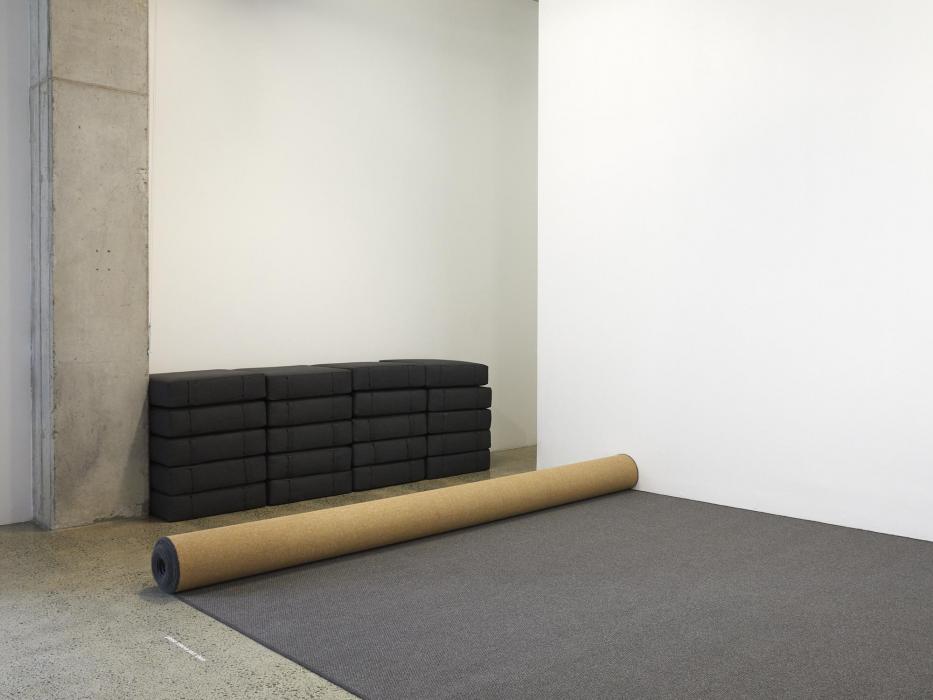A Very Precise Kind of Rhythm
In the accompanying curatorial statement for How to Live Together Balamohan Shingade writes that the exhibition is a ‘scene or course guided by the coupled question: What is the intimacy we must develop to create a community? What is the distance we must maintain to retain our solitude?’[1] Inspired in turn by Roland Barthes’ ‘concept-word’ idiorrhythmy—as researched in his 1976–77 lecture course How to Live Together [2]—this coupled question not only guides the gathering-together of the exhibition but also divides it, causing a theoretical space to arise between the collective intimacy of the event and the seclusion-within-themselves of each of its constituent works/projects.
Barthes begins his lecture course with a personal fantasy, namely, that of a form of group living wherein members of the group are ‘both isolated from and in contact with one another … a life, a regime, a lifestyle, a diaita, diet … where each subject lives according to their own rhythm.’ [3] He begins with the particular, the singular, with ‘one’s own’ (idios), and moves from there to the formation of a group possessing a very precise kind of rhythm (rhuthmos). Hybrid of idios and rhuthmos, idiorrhythmy is the concept-word Barthes uses to name his fantasy, stating that it is ‘a clear, powerful, unwavering projector that isolates the brightly lit stage whereupon [my] desire installs itself, leaving either side of the stage in shadow.’ And he is very clear also about what lies in the shadows, and thus about what is not included in his fantasy, namely, the couple-family nexus and macro-groupings or large communities, stating that both these forms are ‘openly hostile to idiorrhythmy’ and in fact arise in opposition to it. Barthes’ Living-Together fantasy is a utopia of sorts, a ‘domestic utopia’ (sans couples and families) and not a ‘social utopia.’ [4]
Citing as the source of his concept-word Jacques Lacarrière’s 1976 account of two types of monasteries found on Mount Athos in Greece [5], Barthes relays a contrast between idiorrhythmic and coenobitic groups of monks, the latter being groups in which all activities are undertaken collectively, calling this ‘heterorhythmy.’ From there it’s possible to extrapolate that every group or community possesses rhythm, but what’s at stake for Barthes is whether or not the rhythm arises from a gathering-together of personal rhythms or is imposed top-down via the strictures of formalised regulations and schedules.
If idiorrhythmy is ‘the exact opposite of an inflexible, implacably regular cadence,’ what is Shingade’s curatorial proposal? A little further into his statement Shingade writes that his approach is ‘an experiment in reconciling the differing speeds and slownesses of each project within the format of an exhibition.’ Pointing directly as they do to heterorhythmic groups rather than idiorrhythmic ones, two words stand out here: ‘reconciling’ and ‘format.’ To reconcile is to move from a negative to a positive, to heal or settle after an argument, to make friendly after estrangement, to harmonize following disharmony, and so on. Thus to reconcile a group of differing works/projects is to make them acquiescent or contentedly submissive, to move them from a negatively regarded state of difference to a positively regarded one, precisely by slotting them into a predetermined format, schema, or design, that is to say, by way of an institutional will to power. In contradistinction, idiorrhythmy always moves to and fro between positively regarded singular moods, unstable phases, subtle life-ways, desires, and a likewise positively regarded configuration of group fluidity.
In addition, and decisively, whereas Shingade suggests that his exhibition is in itself idiorrhythmic—or will unfold in an idiorrhythmic manner—Barthes makes no such claim for his lecture course, declaring otherwise that the concept-word idiorrhythmy enabled him to move from fantasy to learning (and teaching): ‘through that word, I gained access to things that could be learned.’ [6] And whereas Barthes speaks of a neutral or non-method of learning (and teaching), and thus of being dispatched ‘along an eccentric path; stumbling among snatches … flavours,’ [7] Shingade asserts a ‘methodology’ of the straight path, a modus operandi with a view to achieving a goal, a ‘by the end’ as he puts it.
How to traverse this disconnect? How to reconnect Barthes’ How to Live Together with Shingade’s How to Live Together? During his second introductory session Barthes recalls that the shift from fantasy-mode to learning (and teaching)-mode impelled him to seek out novels possessing an idiorrhythmic structure or outline, what he names a novelistic ‘maquette.’ Now what’s remarkable here is that during the course of his search Barthes failed to discover any such novels, even requesting of the audience that if they know of one, to let him know. Yet despite this complete failure, what his searching did reveal was that ‘almost all novels contain bits and pieces of material pertaining to Living-Together (or Living-Alone): little snatches of simulation, like a very clear, fully realised detail that all of a sudden catches your eye.’ [8] Barthes names these details ‘traits.’
Meanwhile, having made a selection from among the kinds of texts he likes to read—again, the importance of beginning with ‘one’s own’—Barthes recounts the titles and related spatial configurations of the texts from which he gleaned the traits pertaining to his coming lectures: Gide’s ‘The Confined Woman of Poitiers’/The Room; Defoe’s Robinson Crusoe/The Hideout; Palladius’ The Lausiac History/The Desert; Mann’s The Magic Mountain/The Hotel; and Zola’s Pot Luck/The (bourgeois) Apartment Building. Further texts were added and commented on during the lectures, but it was from this initial group that Barthes extracted his alphabetically collated sequence of idiorrhythmic traits—from AKÈDIA / AKEDIA to IDYLLIQUE / IDYLL, from MARGINALITÉS / MARGINALITIES to UTOPIE / UTOPIA.
Might it be possible to reconnect Barthes’ How to Live Together with Shingade’s How to Live Together by using these alphabetically sequenced idiorrhythmic traits? There are fifteen works/projects listed in the exhibition catalogue. In what follows, these works/projects (and their respective artists) are named and dated, and below each entry an annotatively styled attempt is made at relating one or two idiorrhythmic traits as per Barthes’ schedule. In some cases, remarks from Barthes’ introductory sessions will be used. On two occasions, references to other Barthes texts will be made.
Brook Andrew, Inconsequential I – VI, 2018
Hung across a large gallery wall, six white and gold hand-woven sarees with screen printed imagery. Sombre lighting. Imagery → sampling/juxtapositions from Australian and South Asian colonial archives; bands of colour, a large circle. The sarees feel defaced, their anonymous makers disregarded. Decolonial pedagogy? Barthes: RÈGLE / RULE ‘Rule = a way of stretching time out in a straight line, of delimiting zones (of time, of actions).’ As opposed to Law: ‘From the moment the rule is set down in a contract’ it becomes Law → ‘Law: always written.’ Here a screen printed Archive = Law is ‘written’ across, imposed upon, the territory-forming actions/customs of the saree makers. Is this the lesson?
Chris Braddock with dialogue group, Invitation to Dialogue, 2018 – ongoing
A small yet open weekly meeting for peaceable speech. Adopting a responsibility of form. Barthes: ‘Teaching what we do not know; this is called research. Now perhaps comes the age [Braddock’s, ours] of another experience: that of unlearning, of yielding to the unforeseeable change which forgetting imposes on the sedimentation of the knowledges, cultures, and beliefs we have traversed. This experience has an illustrious and outdated name: Sapientia: no power, a little knowledge, a little wisdom, and as much flavour as possible.’ [9] RECTANGLE / RECTANGLE ‘Subversions of the rectangle? … a re-examination of the function of the round (of the rounded).’ Forming a rounded space, we sat on cushions on the gallery floor and talked a while.
Sam Hamilton, Sovereignism, 2011; Sovereignism Amendment #1: The Footnote Asterisk, 2019
Videos. Two screens show the same watery scene of Puget Sound in Washington State, USA; in the mid-distance, a very small rocky island. On the left-hand screen: two flags on short poles fly on the island, one with the word YOU and the other with the word ME. A small boat comes to the island. A figure disembarks and plants a third flag between the two flags, this one with an ampersand (&). The figure returns to the boat and leaves. On the right-hand screen: initially no flags fly on the island. A small boat comes to the island. A figure disembarks and plants a flag with an asterisk (*). The figure returns to the boat and leaves. Barthes: RÈGLE / RULE ‘Rex: the person who decides which spaces are consecrated (cities, territories), someone who marks out.’
Qiane Matata-Sipu, NUKU, 2018 – ongoing
Projected dialogue between Matata-Sipu and Aqui Thami, artist and co-founder of Sister Library, Bombay. To date, nothing to view or participate in.
Poata Alvie McKree, Hōngongoi: Movement as Medicine, 25 July 2019; Hereturikōkā: Women’s Wisdom, 25 August 2019; Mahuru: E Hine E, 25 September 2019
Given my non-identity as a woman, was unable to attend these workshops. Nevertheless, following Hōngongoi a remnant of the event was left behind on the gallery floor, a shrine-like arrangement of items gathered together on and around a small woven mat: little stones, half-burnt candles, leaves, a bronze cast of a human pelvis, a pine cone, flowers… Barthes: FLEURS / FLOWERS ‘On the way to the temple, the layperson stops to buy flowers … Inside the temple, she offers them to Buddha, arranging them on a table, the table of offerings.’
Christian Nyampeta, Sometimes It Was Beautiful, 2018
Video. The biographical mixed with the historical. An often poeticised attempt at thinking (and dancing) through post-colonial reconciliation and museological repatriation. Operates on both a family level (white missionaries) and a macro-grouping/continent-wide level (Africa). The specific matters of concern: Swedish film maker Sven Nykvist’s 1952 film Footsteps of a Witch Doctor, and a group of Congolese artefacts in Stockholm’s Museum of Ethnography. The video’s conceit: a group of friends/actors play a group of prominent (1970s?) contemporaries, including Yasser Arafat, Leela Gandhi, Gabriel Garcia Marquez, Wole Soyinka, Winnie Mandela, Andrei Tarkovsky, and Sven Nykvist. In a pivotal scene, the contemporaries discuss Nykvist’s Footsteps of a Witch Doctor. Barthes: ‘In its most basic form Living-Together is also temporal: “living at the same time as…” “living in the same time as…” = contemporaneity.’ Yet by bringing these contemporaries into our contemporaneity, the video creates a paradox. Barthes: ‘Perhaps we’d come up against this paradox: an unexpected link between the contemporary and the untimely.’ [10]
The Otolith Group, O Horizon, 2018
Video shot in and around Santiniketan, a school in rural West Bengal founded in 1901 by the poet Rabindranath Tagore. Study for a ‘social utopia,’ not a ‘domestic utopia.’ → Voiceover suggests Santiniketan as model for a planetary university. Thus Santiniketan feels somewhat Fourierist. Barthes: ‘Fourier’s Phalanstery: with its timing … the exact opposite of idiorrhythmy: … boarding schools.’ [11] Nevertheless, the video portrays the school as idyllic. Barthes: IDYLLIQUE / IDYLL ‘Let’s call “idyllic” any space of human relations defined by the absence of conflict.’
Hetain Patel, To Dance Like Your Dad, 2009
Dual-screen video. On the left hand side: the artist’s father conducts a tour of his workplace, a car-to-hearse conversion factory. On the right hand side: in a generic studio space, the artist replicates his father’s actions in real time. Barthes: MONÔSIS / MONOSIS → ‘Monk … movement whereby the subject mimics Adam’s condition prior to being divided into two.’ Here an artist-monk mimics his worker-father. Absence of the mother.
Pallavi Paul, Nayi Kheti: New Harvest, 2013; Shabdkosh: A Dictionary, 2013; Long Hair, Short Ideas, 2014
Trilogy of videos tracking eccentric paths through the life and work of revolutionary poet Rama Shankar Yadav (1957–2015), better known as Vidrohi, ‘The Rebel.’ Includes texts, graphics, references to the history of cinema, an interview with the poet’s estranged wife, etc. Fragmentary. Stumbling among snatches. A study in madness and marginality. Barthes: MARGINALITÉS / MARGINALTIES ‘there are risks that follow from the requirement of social integration, which society imposes on the individual as a natural law … Eccentricity: an individual’s subversion of the norms of social life: physical appearance, abode, relationships, lifestyle.’
Bridget Rewiti, Tauutuutu, 2016; Club Field Series, 2019
Tauutuutu: Video. The artist and various friends engage in reciprocal exchange: dance move for dance move, guitar lesson for violin lesson, netball stretches for voice lessons, etc. Various poetico-ethical subtitles. Barthes: IDYLLIQUE / IDYLL ‘Let’s call “idyllic” any space of human relations defined by the absence of conflict.’
Club Field Series: eight photographs displayed one at a time consecutively during the course of the exhibition. Documentary shots from a study of various South Island ski field clubs. Group living in a mountain hut ≠ idiorrhythmy. And yet … Barthes: XÉNITEIA / XENITEIA ‘The community prepares to brave the night (imagine a countryside far away from anywhere, with no lights, so where nightfall really means the threat of darkness). Living-Together: perhaps simply a way of confronting the sadness of the night together.’
Deborah Rundle, Made for Each Other, 2019
With each of its cut out and mounted letters individually back-lit, a softly glowing statement runs horizontally across a large black-painted wall: IT’S AS IF WE WERE MADE FOR EACH OTHER. Like Barthes’ lecture series, Rundle’s statement begins with a fantasy, the caveat of the ‘as if.’ The ‘as if’ magically suspends the statement’s meaning, makes it float, allows the ‘we’ of the statement to drift in indeterminacy, neutrality. The question of how or in what manner we are made for each other is left open, unanswered = pure potential.
Sister Library and Samoa House Library, Sister Library with Samoa House Library, 2019
A series of open meetings. Two small, independent groups of artists (both of which have founded libraries) come together for gift exchange and study. Barthes: ‘Let’s be clear that a fantasy requires a setting (a scenario) and therefore a place … with two rooms for my own use and two more close by for a few friends + somewhere to come together for synaxe (the library).’ [12] Synaxe: in a monastery = coming together for prayer; in Barthes’ fantasy = coming together for peaceable talk. Yet why did these two groups initially form, what is their purpose, their telos, their cause? Various possibilities arise → Barthes: CAUSE / CAUSE ‘The dependency assumption: the group meets to obtain security from a leader upon whom they depend for material and spiritual nourishment … The fight-flight assumption: the group meets to fight an outside threat or to escape it … The vaguest (non-militant) Cause or Telos: for the sake of “happiness,” for the sake of “pleasure” = sociability as an end in itself.’
Sriwhana Spong, The Painter-Tailor, 2019; Death of Bhoma, 2019
The Painter-Tailor: video. The artist’s father has spent most of his life living in Bali. The artist has spent most of her life living away from Bali. The artist visits her father in Bali. The artist records scenes from her visit, with special focus on a large painting by her sometimes-tailor, sometimes-painter (and now deceased) paternal grandfather. Barthes: XÉNITEIA / XENITEIA ‘changing country, expatriation, exile.’ A feeling of not being at-home—sometimes even while at-home. But there’s a possible counter-effectuation, a ‘rupture of Xeniteia → Thlipsis = allowing yourself to be transported by the charm of the memory of your parents; allowing yourself to indulge in feelings of compassion for your father … in affection for children, in the desire to have someone to love, etc. Thlipsis: on the side of nostalgia; homesickness for a specific place.’ Much of the video is shot in a courtyard garden. CLÔTURE / ENCLOSURE ‘a courtyard garden: there’s enclosure … but no protection or prohibition, only a fairly lose marking out of the confines of the space … → The community defines itself, it doesn’t shut itself off.’
Death of Bhoma: a three-sectioned wall hanging. Indian ink on cotton. Notational rendition in brush script of three sections from the 12th century epic poem Bhomāntaka. Exquisite—and given Barthes’ obsession with the materiality of writing, the most generically Barthesian work in the exhibition. Barthes: ‘… for a long time writing was attended by great ceremony. In ancient Chinese society, one prepared oneself for writing, for handling the ink brush, through an almost religious asceticism. In certain Christian monasteries of the Middle Ages, the copyists began their work only after a day of meditation.’ [13]
James Tapsell-Kururangi, Living with My Grandmother for One Year, 2019 – ongoing
In my view—literally!—this project exists only as a name, a catalogue entry. Barthes: NOMS / NAMES ‘In an ideal (utopian) community, there would be no names, making it impossible for people to gossip about one another: there would be only direct addresses, presences, not … absences. There would be no manipulations effected by the name, whether good or bad.’ Tapsell-Kururangi’s project is absent, a manipulation effected by its name. Operates at the level of gossip. Interesting vis a vis conceptual art’s hyper-reliance on names and minimalism’s use of ‘untitled.’
Kalisolaite ‘Uhila, 5 Minutes, 2019
A small yet open weekly meeting in Albert Park’s band rotunda for five minutes shared non-speech. Rotunda → Barthes: RECTANGLE / RECTANGLE “Subversions of the rectangle? … a re-examination of the function of the round (of the rounded).” A counter-move to Chris Braddock’s dialogue project: when not talking, the milieu becomes audible, a soundscape. Barthes: ÉCOUTE / HEARING ‘Territory: a polyphonic network of familiar sounds: the one’s I’m able to identify and thereafter function as signs of my space.’ The morning I attended 5 Minutes the maintenance contractors were in the park en masse. All we could hear was the din of fossil-fuel powered leaf-blowers, weed-eaters, mowers, chainsaws. Barthes: SALETÉ / DIRTINESS ‘“Nature” isn’t clean (it’s neither clean nor dirty). Behaviours relating to cleanliness: invested with a whole complex array of symbolic and cultural values, of ideological alibis. → “Cleanliness” becomes “nature” [the park] = “natural.” Contrary to what we tell ourselves, society tends to assimilate “technological progress” to nature, to what’s natural.’ DOMESTIQUES / SERVANTS ‘Who takes care of the domestic tasks? Thorny issue for modern “communes”: Who does the washing up? → The problem of servants.’ Likewise, who maintains the park? And who cleans the toilets at the gallery? [14]
Notes
[1] Balamohan Shingade, How to Live Together: Exhibition Guide, Version 1 (Auckland: St Paul Gallery-AUT, 2019) p. 1, and all following Shingade quotes.
[2] Roland Barthes, How To Live Together: Novelistic Simulations of Some Everyday Spaces; Notes For a Lecture Course and Seminar at the Collège de France (1976–1977), trans. Kate Briggs (New York: Columbia University Press, 2013).
[3] Barthes, How To Live Together, p. 6
[4] Barthes, How To Live Together, p. 8 – 9
[5] Jacques Lacarrière, L’ Été Grec: Une Grèce Quotidienne de 4000 Ans (Paris: Pion, 1976).
[6] Barthes, How To Live Together, p. 7
[7] Barthes, How To Live Together, p. 4
[8] Barthes, How To Live Together, p. 13
[9] Roland Barthes, ‘Inaugural Lecture, Collège de France’ in Susan Sontag, ed. A Barthes Reader (London: Jonathan Cape, 1982) p. 478
[10] Barthes, How To Live Together, p. 5 – 6
[11] Barthes, How To Live Together, p. 9
[12] Barthes, How To Live Together, p. 7
[13] Roland Barthes, ‘An Almost Obsessive Relation to Writing Instruments’ in The Grain of the Voice: Interviews 1962–1980, trans. Linda Coverdale (New York: Hill and Wang, 1985) p. 178
[14] See Françoise Vergès’s exceptional and very disturbing essay ‘Capitalocene, Waste, and Gender’ available at https://www.e-flux.com/journal/100/269165/capitalocene-waste-race-and-gender/)

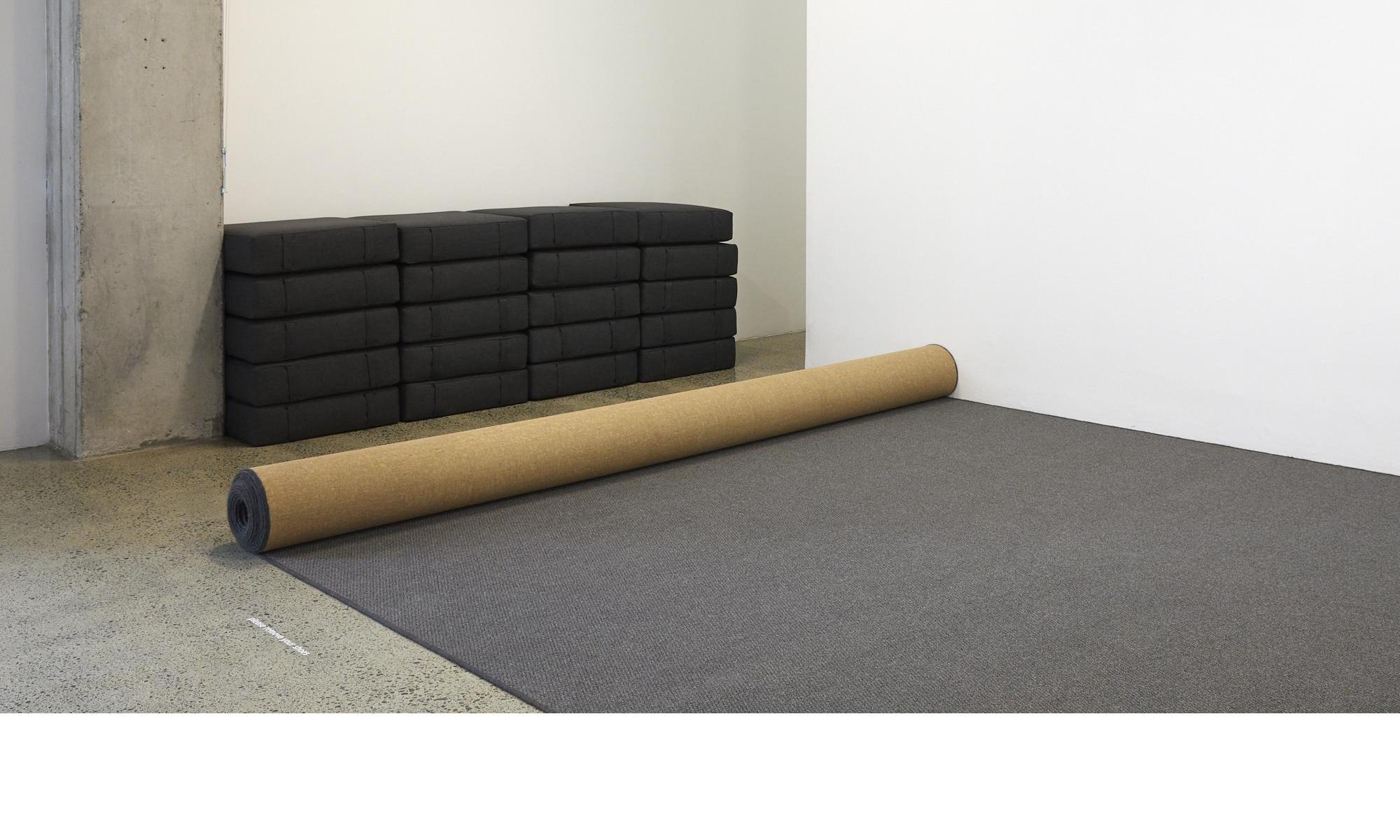
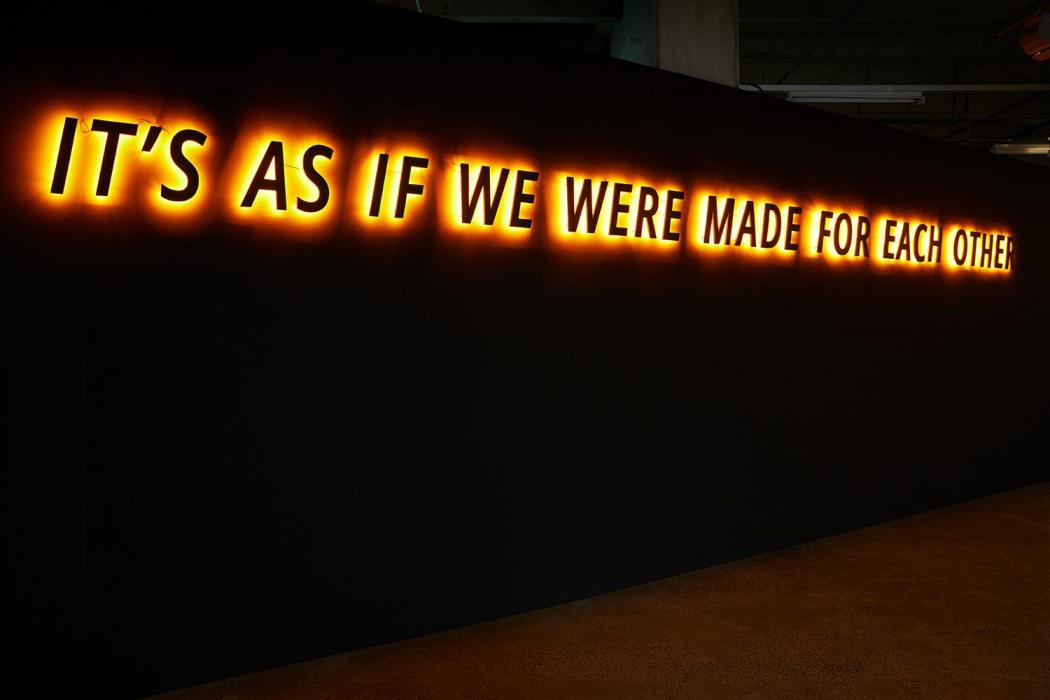
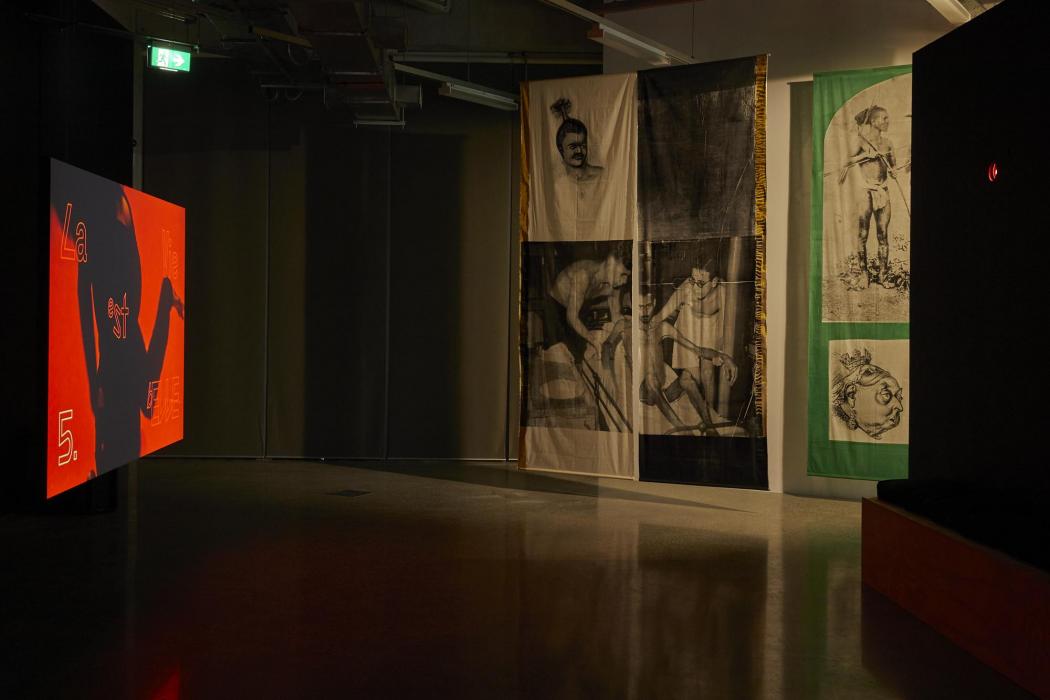
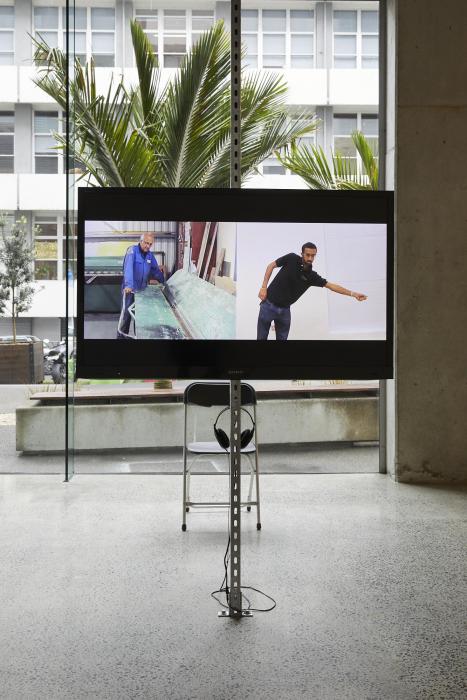
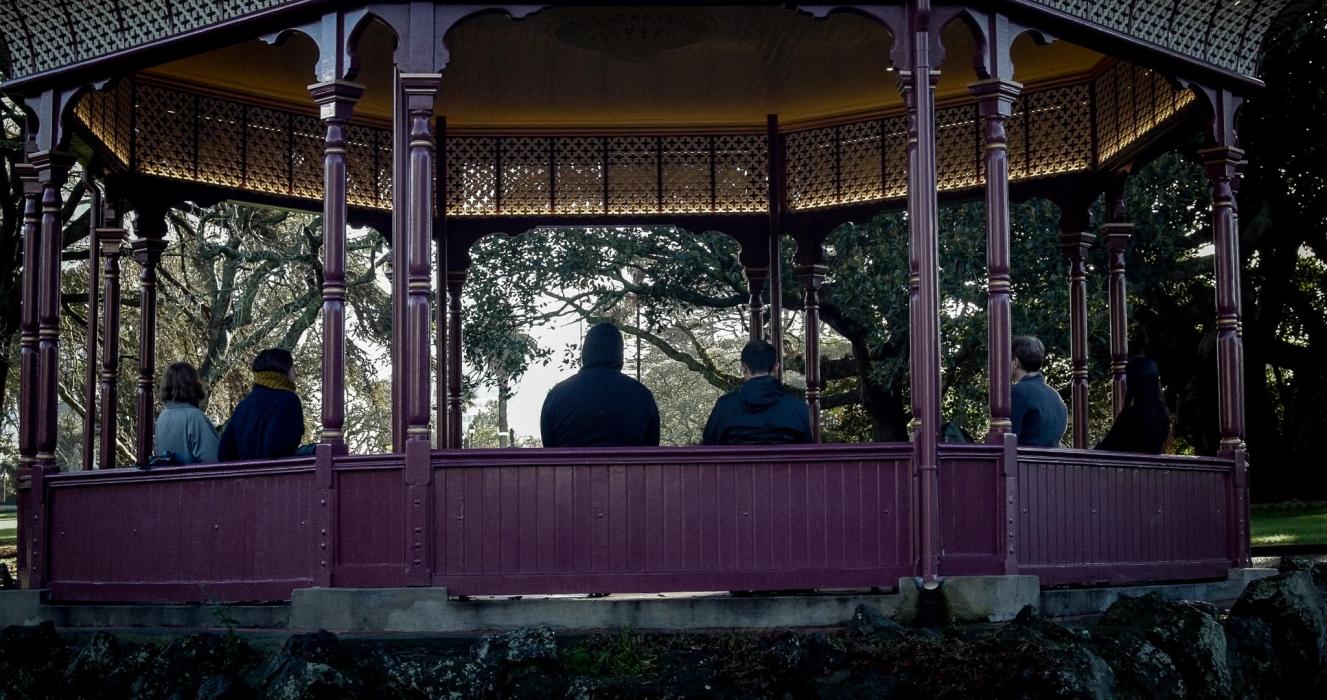
.%20Courtesy%20and%20copyright%20the%20artists-itok=nA9-k7Mo.jpg)
